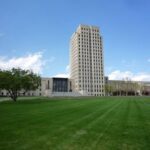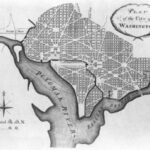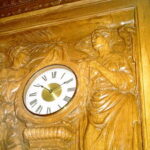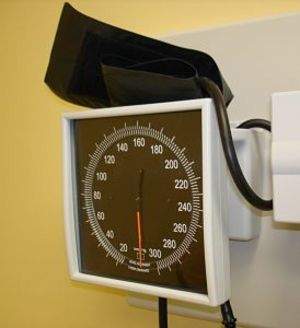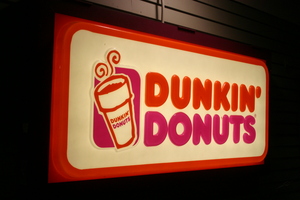When most people plan vacation trips, they don’t consider visiting North Dakota, much less Bismarck, but they should. The state, and its capitol, are full of history, fun things to see and do, great restaurants, and some of the friendliest people in the world. In case you can’t get here, and in hopes that you can, let me give you a taste of my home.
History
Bismarck was founded when North Dakota was still part of the Louisiana Purchase, even before the Dakota Territory was established in 1861. A small settlement on the Missouri in 1837, called at that time Crossing on the Missouri for its position as one of the best spots to ford the river, was founded by the American Fur Company as a trading post with the river village Indians (Mandans, Hidatsas, and Arikaras). It was also a port for steamboats carrying military supplies and troops to forts and Indian Agencies in points west. By that year the Mandan Indians had been mostly wiped out by smallpox, introduced by Europeans, and their villages in the Bismarck area were abandoned when the few remaining Mandan joined the Hidatsas farther north.
In 1871 – 72, squatters from the eastern states joined the community, anticipating the arrival of the Northern Pacific Railroad. In 1872, Camp Greeley, later call Camp Hancock, was built as a military post at the settlement to protect crews building the railroad. The railroad arrived at Crossing on the Missouri in 1873, bringing printing presses for the Bismarck Tribune, the oldest newspaper still publishing in the state. (The biggest scoop in the Tribune’s history was the story of Custer’s Last Stand on the Little Bighorn; a Tribune writer named Mark Kellogg had accompanied the troops, sent back articles along the journey, then died with the 7th Cavalry in June of 1876; the 7th Cavalry had departed from Fort Abraham Lincoln, across the river from Bismarck.) In 1873 the growing community changed its name to Bismarck, in honor of German Chancellor Otto von Bismarck, in hopes that he would invest money in the floundering Northern Pacific Railroad. He didn’t, but the name stuck.
What To See
Bismarck has more than its share of historic sites, buildings, and places to play. The Camp Hancock State Historic site, located at 101 W. Main Street, is the location of the original Camp Hancock (formerly Greeley), and is the site of the Quartermaster Depot and Signal Office. That building now houses an interpretive museum with historic items and information about area history. In recent years, one of the oldest church buildings in Bismarck and an old steam locomotive have been added to the attractions there. Another military site is Fort Abraham Lincoln, across the Missouri and outside of Bismarck’s sister city, Mandan. On one side of state highway 1801, four military blockhouses (primarily used as lookout and defensive points) have been restored to their 1860s appearance; climbing to the top of one, a visitor can see all of Bismarck, Mandan, and many miles up and down the river. If you’re lucky, you may see a herd of American Bison, also called Buffalo, raised by local ranchers. Nearby, Custer’s house along with the Commissary and some of the other buildings have been rebuilt and restored to their 1860s condition. From June through August, historical re-enactors provide several daily tours of the house and fort area, and weekend evenings are brightened with entertaining melodramas written in the Custer era.
Across Highway 101 you will find On-A-Slant Village, a reconstructed earth lodge village that was home to Mandan Indians from about 1575 until 1781. The village was abandoned because it had been ravaged by smallpox, but the remaining Mandans moved north and West to join the Hidatsas at the Knife River Indian Villages at the confluence of the Knife and Missouri Rivers. Five lodges were reconstructed here with the assistance of the last surviving pure-blood Mandan woman in the 1950s, although the visitor center nearby was built in the 1930s by the Civilian Conservation Corps. Guided tours are available from Memorial Day to Labor Day, and self-guiding maps and pamphlets allow you to enjoy the visit without a schedule. The lodges, built with soil and sod on a frame of cottonwood logs, were generally built by women, and the thick walls and protruding entryways, closed with hides, kept the lodges warm in the cruel prairie winter, and cool in the long hot summers. One of the lodges is the Ceremonial lodge, and contains artifacts like those that would have been used when the village was inhabited. The visitor center includes restrooms, a concession stand, and a paved parking lot.
On the Bismarck side of the river, visitors will find the Double Ditch Indian Village Historic site, which contains the ruins of another large Mandan village that was inhabited between 1500 and 1781. Also on the Bismarck side is the Fort Clark Trading Post State Historic site, located at 612 E. Boulevard Avenue in Bismarck. Here, visitors can see a well-preserved record of both the fur trade and personal tragedy. The ruins include the remains of a large earth lodge village, a cemetery, and two fur trade posts.
For those who like their history a little more recent, the former Governor’s Mansion, at 320 E. Avenue B, is a mid-Victorian home that was the residence of North Dakota’s governors from 1893 to 1960. The old carriage house has been restored, and one of the rooms of the Mansion itself is filled with exhibits explaining the restoration process. There are two neighborhoods in Bismarck that have been listed on the National Register of Historic Places; these are the Cathedral Area Historic District, a residential neighborhood showcasing housing styles that include Colonial Revival, Tudor Revival, Craftsman bungalows, and late Victorian architecture. The other neighborhood is the Downtown Historic District, with buildings from 1900 to the 1930s, many restored and refinished as fine restaurants, art galleries, and boutiques.
The Capitol Building, 600 E. Boulevard Avenue, built in the early 1930s following a fire that claimed the original building, is known for its unique Art Deco architecture. At 22 stories, it is one of the tallest buildings in North Dakota, and is also one of the few state capitol buildings that doesn’t incorporate a dome into its design.
What to Do
It’s not all history and stuffy old buildings in Bismarck. Raging Rivers, across the river in Mandan, is a full water park that includes sprint car and grand prix go-cart tracks, a mini-golf course, and a video arcade. It is open seasonally. The Dakota Zoo, on Sertoma Park Road, opened in 1961, and has been adding animals and habitats ever since. It features regional wildlife such as buffalo, elk, white-tailed deer, moose, prairie dogs, and cougars, along with more exotic animals like camels, wallabies, and camels, and also visiting exhibits like tigers, lions, pandas, and elephants. For smaller children, there is a petting zoo, along with a small electric train that slowly circles the major exhibits. The zoo also has a gift shop and a concession stand.
When visiting Bismarck, one must-see is the North Dakota Heritage Center (612 E. Boulevard Ave.). The center houses exhibits depicting life on the northern plains, from Native American pre-history, to the era of European-Native conflict, and into the early settlement era. Shorter term exhibits have included a mountain man rendezvous, and an exhibit of the dinosaurs of North Dakota.
Sleepy Hollow Summer Theatre, at 26th Street and Divide in Bismarck, provides art under the stars. A large Broadway production, along with one or two smaller plays, is presented each summer with local casts, in an open-air theater. The Bismarck Art and Galleries Association, at 422 E. Front Avenue, has monthly exhibits displaying the works of local, regional, and national artists. Their semi-annual fund raisers are festivities that shouldn’t be missed.
For more adult recreation, Bismarck boasts five golf courses and a driving range, with many more in surrounding communities. Hawktree Golf Course, at 3400 Burnt Creek Loop in Bismarck, is rated 49th in the Top 100 Modern Golf Courses. Tennis courts, both indoor and outdoor, can be found at Capital Racquet and Fitness Center, 3200 N. 10th Street, and on numerous municipal parks throughout the city. Swimming is available year round at the YMCA, and seasonally at city parks. There are several marinas along the river where visitors can either relax on a riverboat cruise, or rent boats and personal watercraft for fun on the river.
Shopping can be found in downtown Bismarck, where there are many fascinating boutiques and specialty stores, like Treasures of Earth and Sea, One World Imports, and two local jewelry stores, as well as Kirkwood Mall in southwest Bismarck (between 7th and 3rd streets, just north of Expressway), and Gateway Mall, on State Street in north Bismarck.
In the surrounding area, there are many beautiful camping areas and small state parks. I would suggest that you check the state website, www.nd.gov, for more information on these, as well as museums, Theodore National Park, and other places and events across the state.
Where to Eat
Bismarck has its share of chain restaurants and fast food eateries, but it is the local restaurants that feature North Dakota Dining at its finest.
Kroll’s Diner, with two locations in Bismarck and one in Mandan, offers plain farm food at affordable prices. You can eat North Dakota German standards like Fleischkuegele (fried dough around ground meat, onions, and seasonings), Knoephle soup (a chicken soup with heavy dumplings), and 50s style burgers, shakes, and fries.
A more sophisticated palate might prefer Peacock Alley Grille and Bar. Located in the historic Patterson Hotel in downtown Bismarck, the restaurant has a separate bar, decorated in brass and cherry wood that offers a full line of beverages along with a great bar menu, and a dining room that features steak, poultry, pasta, and seafood, with specialties such as Fillet of Ostrich, Pan-Blackened Walleye, and Prime Rib. The Catches of the day, with prices, are shown on a chalkboard near the entrance, and decadent desserts are the perfect ending to your great meal. New to the downtown area is the Pirogue Grille, with modern food in a historic setting. The menu changes daily, but you can be assured of finding an excellent choice of fish, fowl, meat, and meatless, along with the chef’s choice dessert tray. The Bistro, at 1103 E. Front Avenue, has been voted “Best Overall Restaurant” by the Bismarck Tribune. According to their menu, they feature a wood-fired cuisine that includes steaks, chops, fresh seafood, regional Italian dishes, pasta homemade bread, and fine desserts. Their wood-fired pizzas are a specialty of the house.
On the edge of downtown is Fiesta Villa, arguably Bismarck’s best and most authentic Mexican restaurant. Housed in the old train depot (another National Registered Historic Place), which was built in a Spanish mission style complete with red-tiled roof in the early 20th century, Fiesta Villa offers an array of authentic Mexican food for lunch and dinner, a full bar, and daily lunch specials. Across the city, at the junction of Interstate 94 and US Highway 83, is the East Forty Chophouse and Tavern, voted “Bismarck’s Most Romantic Restaurant” by the Bismarck Tribune. It contains five unique dining rooms, each with an antique fireplace and vintage furniture. The menu features steaks, chops, and pasta, and features both regional wild game like Walleye, Pheasant, and Buffalo as well as seafood flown in fresh daily. Their beef is among the best in Bismarck.
Wherever you choose to eat, you can be assured of a warm welcome, gracious service, and great food.
And More:
This has only touched on the highlights of the immediate Bismarck area. The entire state is filled with wonders of nature and history, outdoor sports for all seasons, and a beautiful and ever changing landscape. While the prairie may not be as awe-inspiring as the Rockies, a prairie sunset, or a lightning storm, is something to behold. A variety of wildlife abounds, and areas untouched by man can still be found. Whether your sport is golf, rock-climbing, biking, hiking,canoing, or skiing, you’ll find opportunities to indulge it in North Dakota. Come to play, to learn, to eat, or just plain have fun, and I promise, you’ll want to come back.
